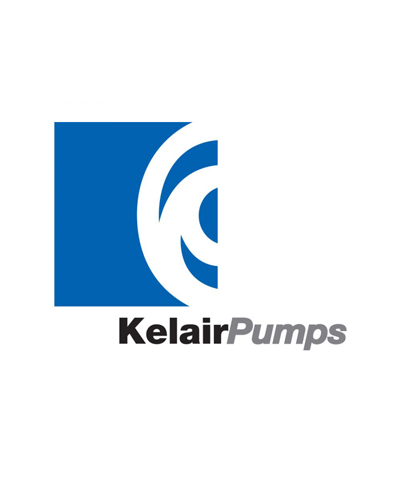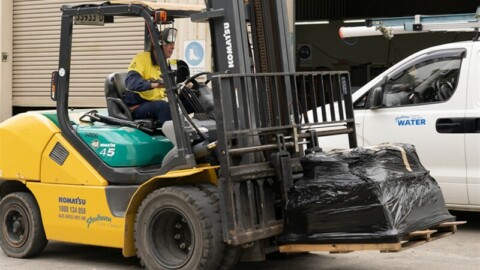By Christopher Allan, Journalist, Pump Industry Magazine
Gippsland Water’s new Sale Outfall Sewer Pump Station is now operational, a $13.5 million project that will service the communities of Sale, Wurruk, and Fulham for the next 50 years. Pump Industry spoke with Gippsland Water’s Manager Asset Delivery, Paul Henderson, to learn how key planning and design decisions have delivered both successful asset performance, as well as positive amenity outcomes for the community like improved odour control.
Sewerage infrastructure in the Sale region is now more resilient and has a more amenable future, with Gippsland Water’s successful commissioning of the new Sale Outfall Sewer Pump Station last year.
The $13.5 million project, which will service the networks of Sale, Wurruk and Fulham for the next 50 years, was first identified as a top ten capital project in Gippsland Water’s 2018-2023 Price Submission to the Essential Services Commission.
Paul Henderson, Manager Asset Delivery at Gippsland Water, reveals that it was more cost-effective and beneficial to the Sale community to build a new pump station, with greater resilience and amenable design.
Key benefits delivered by the new station include greater capacity when compared to the old station, the inclusion of odour mitigation technology, and improved resilience of the asset under wet weather scenarios.
Designing an asset for performance and resilience From design and procurement through to construction and operation, the new Outfall Sewer Pump Station has been optimised for both performance and resilience for the next 50 years, from capacity improvements to better resistance to wet weather events.
“The old SPS was at capacity and could no longer contain flows to our containment standard, which is to contain flows from an 18.1 per cent annual exceedance probability (AEP) rainfall event,” Mr Henderson said.
“The pump station now services 7,586 existing connections – households and businesses – and is designed to cater for a further 2,000 connections.”
The likelihood of spills into Flooding Creek has also been addressed, by constructing a one megalitre storage tank that will be invaluable in managing wet weather events.
While the new pump station’s discharge capacity remains comparable to that of the old station, inflow capacity has been boosted significantly – also thanks to the station’s storage tank.
The new pump station caters for a peak dry weather flow of 346 litres per second (L/s) and peak wet weather flow of 628L/s. Regarding the procurement process, Mr Henderson revealed that the new pump station was “primarily procured under two AS4000 civil construct contracts” along with a mechanical and electrical contract, and smaller equipment supply and installation contracts.
The two civil contracts were both awarded to local contractors in the Sale region.

Pump specification
Key pump specification decisions for the new station were made to best coordinate with the downstream Longford Booster Pump Station across different operation scenarios and sewage inflow rates.
“The pump station was designed with three Flygt NP 3231/735 3~ 480 pumps; duty, assist and standby, each VSD driven with 170kW rated motors,” Mr Henderson said. “Mains power supply was extended to a new on-site 500kVA ring-main kiosk substation transformer for the new pump station.”
One major factor determining pump selection at the new station was ensuring that design discharge pressure in the rising main – downstream of the new pump station – is never greater than the maximum operating pressure experienced with the old pump station.
“This limited the head to around 44m and corresponding design discharge of 128L/s under the critical operating scenario – which is when the Longford Booster Pump Station is not operating and the new pump station pumps all the way to Dutson Downs,” Mr Henderson said.
The future-focused design of the new station is also reflected in the 5.5m diameter of the wet well, which is large enough to accommodate larger, 375kW pumps in the future.
This could be an important design decision should the new station’s connection with the Longford Booster Pump Station change via upgrade or decommissioning scenarios, in combination with upgrades to the rising main between Sale and Longford.
Improving asset amenity: from odour control to a positive visual impact Gippsland Water’s commitment to asset amenity is reflected in many of the decisions made across site selection, landscaping and design, as well as the inclusion of a comprehensive odour control system.
According to Mr Henderson, removal of the old pump station already improves views from the Port of Sale precinct, and much thought was put into the best location for the new pump station.
The selected project site on Foster Street in Sale was chosen for many reasons including proximity to existing infrastructure, adequate site size, height above the flood level, and vehicle access for operational maintenance.
A key design decision that improved the overall amenity of the asset was the inclusion of an odour control system, to reduce odours escaping from the site. Potential odour sources identified included the inlet works, the wet well and the emergency storage tank.
A large fan draws air through a vacuum into the odour facility, a two-stage system comprising a bio-filter and an activated carbon polishing unit.
“This should remove all the odour, so that the clean air is discharged through the vent stack, so we don’t get odour leaving the site,” Mr Henderson said. “Within the control cubicles for the odour system we have continuous hydrogen sulphide monitoring of before and after, to ensure that the air being discharged is clean.
“This also ensures compliance with the EPA regulations.” Gippsland Water also managed the amenity of the new pump station by considering the asset’s visual impact. “A key early stage of the project involved working closely with Wellington Shire Council, the community of Sale, and a landscape architect to create a facade for the new sewer pump station that complements the amenity of the area,” Mr Henderson said.
Landscaping efforts of the project include a planting scheme that incorporates native evergreen trees as well as indigenous plants laid out in organic shapes, with further planting to assist with screening the asset at its southern and eastern boundaries. The site also features timber fencing as a reference to both the historic port of Sale and the local timber industry.
















